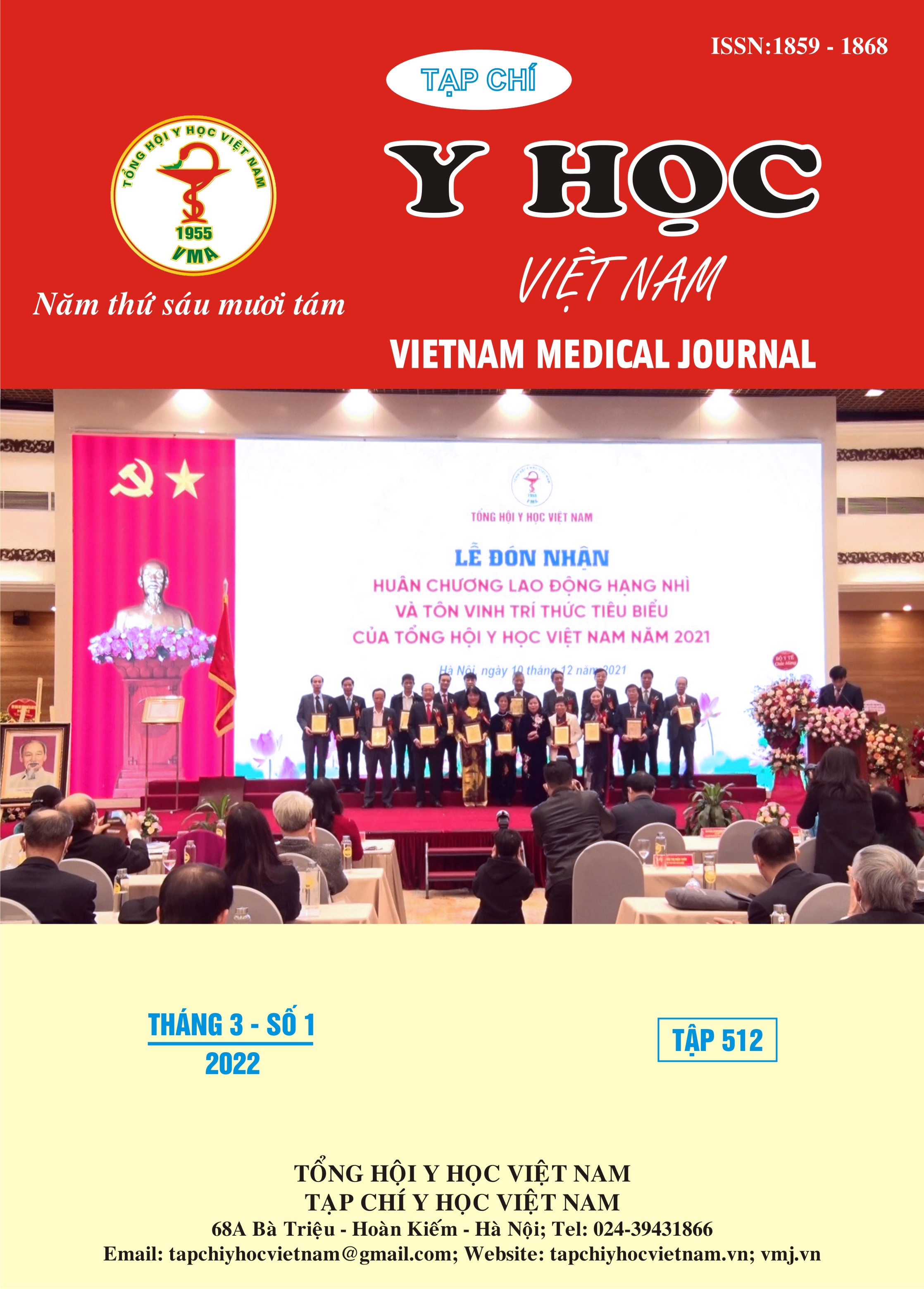RELATIONSHIP BETWEEN CLINICAL SYMPTOMS AND MAGNETIC RESONANCE IMAGING OF POSTERIOR CEREBRAL ARTERY INFARCTION
Main Article Content
Abstract
Objective: To analysis the relationship between clinical symptoms and magnetic resonance imaging of posterior cerebral artery infarction. Subjects and methods: A prospective, descriptive study of 68 patients with posterior cerebral artery infarction treated at the Department of Neurology, Bach Mai Hospital from March 2017 to March 2018. Results: The mean age was 64.79 ± 11.29, the male/female ratio was 1.83. Risk factors are high blood pressure, alcohol consumption, diabetes, and smoking. Clinical symptoms include: sensory disturbance (45.5%), hemianopia (22%), aphasia (23.5%), cognitive impairment (38.2%) and other neurological deficits. There is a close relationship between symptoms of hemisensory disturbances with thalamus lesions, hemispheric symptoms with occipital lobe lesions, cognitive impairment symptoms with temporal lobe lesions with p <0.001. Patients with pc-ASPECTS score < 8 will be 15 times more likely to have severe disability than patients with pc-ASPECTS score ≥ 8.
Article Details
Keywords
Posterior cerebral artery infarction, magnetic resonance imaging
References
2. Nouh A, Remke J, Ruland S. Ischemic posterior circulation stroke: a review of anatomy, clinical presentations, diagnosis, and current management. Frontiers in neurology. 2014;5:30.
3. Caplan LR. Caplan's stroke. Cambridge University Press; 2016.
4. Arboix A, Arbe G, García-Eroles L, Oliveres M, Parra O, Massons J. Infarctions in the vascular territory of the posterior cerebral artery: clinical features in 232 patients. BMC Research Notes. 2011;4(1):1-7.
5. Hypertension TFftMoAHotESo. Guidelines for the management of arterial hypertension. Eur Heart J. 2007;28:1462-1536.
6. Pauletto P, Palatini P, Da Ros S, et al. Factors underlying the increase in carotid intima-media thickness in borderline hypertensives. Arteriosclerosis, thrombosis, and vascular biology. 1999;19(5):1231-1237.
7. Puetz V, Sylaja P, Coutts SB, et al. Extent of hypoattenuation on CT angiography source images predicts functional outcome in patients with basilar artery occlusion. Stroke. 2008;39(9):2485-2490.


